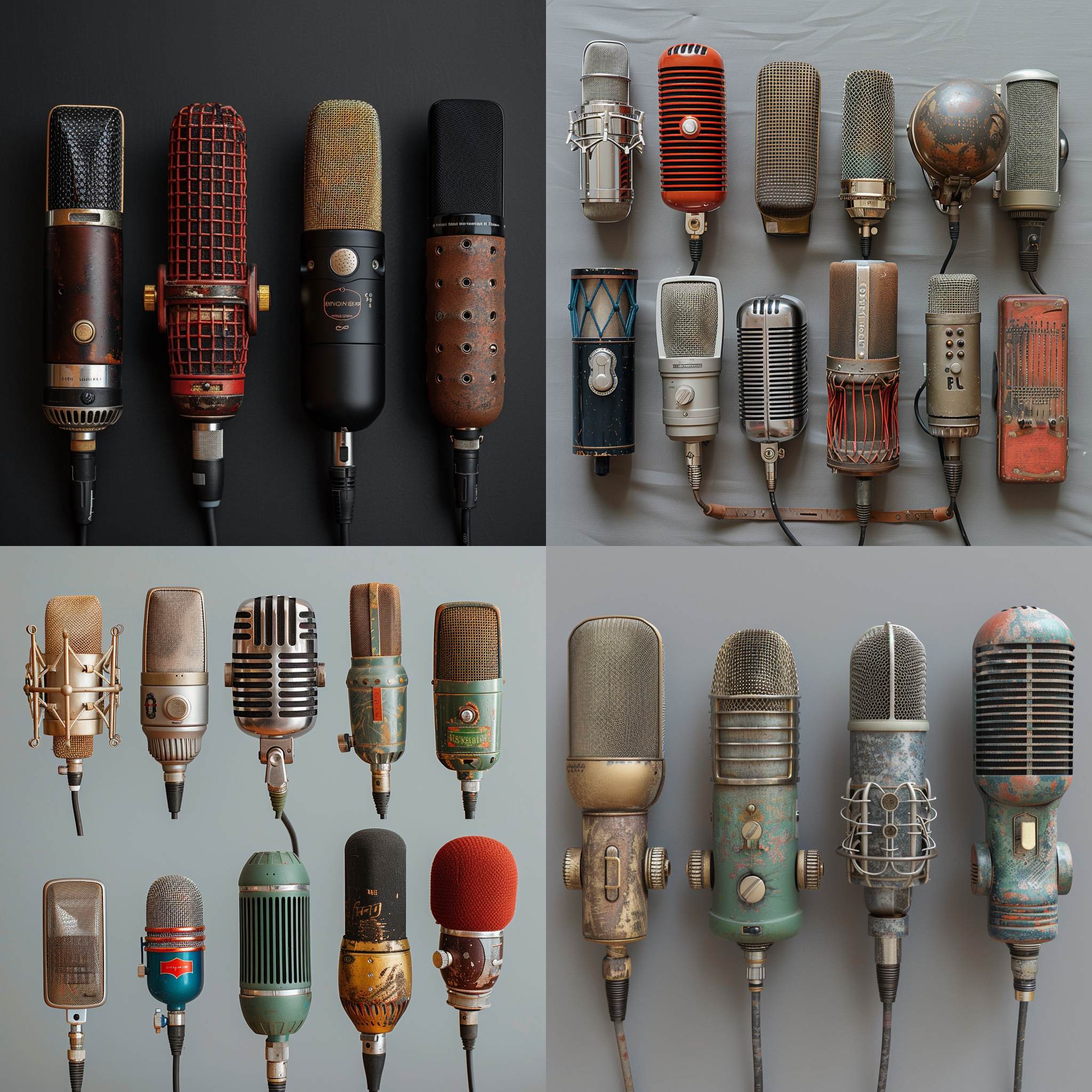Overview
Microphones are essential tools in audio recording and production, capturing sound from the environment and converting it into electrical signals for processing and playback. Understanding the different types of microphones, their polar patterns, and the appropriate contexts for their use is crucial for achieving high-quality recordings. This article will explore various microphone types, their polar patterns, and practical applications to help you make informed decisions in your recording endeavors.
Microphone Types
- Dynamic Microphones
- Description: Dynamic microphones use a diaphragm attached to a coil of wire, placed within the magnetic field of a magnet. When sound waves hit the diaphragm, it moves the coil, generating an electrical signal.
- Characteristics: Durable, can handle high sound pressure levels (SPL), less sensitive to subtle sounds.
- Common Uses: Live sound reinforcement, recording loud sound sources (e.g., drums, guitar amps).
- Condenser Microphones
- Description: Condenser microphones use a diaphragm placed close to a backplate, creating a capacitor. When sound waves hit the diaphragm, the distance between the diaphragm and backplate changes, producing an electrical signal.
- Characteristics: Highly sensitive, wide frequency response, requires phantom power.
- Common Uses: Studio vocals, acoustic instruments, detailed recordings requiring sensitivity and accuracy.
- Ribbon Microphones
- Description: Ribbon microphones use a thin ribbon of conductive material suspended between the poles of a magnet. Sound waves cause the ribbon to move, generating an electrical signal.
- Characteristics: Smooth, natural sound, fragile, can be damaged by high SPL, sensitive to air blasts.
- Common Uses: Vocals, strings, brass instruments, room ambiance, applications where a vintage sound is desired.
- Lavalier Microphones
- Description: Small, clip-on microphones typically used in broadcasting, theater, and public speaking.
- Characteristics: Discreet, lightweight, often omnidirectional.
- Common Uses: Interviews, presentations, film and theater productions.
- Shotgun Microphones
- Description: Shotgun microphones have a long, narrow pickup pattern, making them highly directional.
- Characteristics: Highly directional, excellent for isolating sound sources.
- Common Uses: Film and video production, field recording, any situation requiring focused sound capture from a distance.
Polar Patterns
- Cardioid
- Description: The cardioid polar pattern is heart-shaped, capturing sound primarily from the front and rejecting sound from the sides and rear.
- Characteristics: Good isolation of the main sound source, reduces background noise.
- Common Uses: Vocals, guitar amps, general-purpose recording where isolation is needed.
- Supercardioid
- Description: Similar to the cardioid pattern but with a narrower pickup angle and a small lobe of sensitivity at the rear.
- Characteristics: More focused front pickup, slightly better rejection of side noise than cardioid.
- Common Uses: Live vocals, instruments, situations requiring more directional control.
- Hypercardioid
- Description: Even narrower pickup angle than supercardioid, with a more prominent rear lobe.
- Characteristics: Very focused front pickup, greater rear pickup than supercardioid.
- Common Uses: Situations requiring extreme directionality, reducing side noise in noisy environments.
- Omnidirectional
- Description: The omnidirectional pattern captures sound equally from all directions.
- Characteristics: Natural sound capture, no directional bias, sensitive to ambient noise.
- Common Uses: Room ambiance, orchestras, group vocals, interviews where natural sound is desired.
- Bidirectional (Figure-8)
- Description: The figure-8 pattern captures sound from the front and rear while rejecting sound from the sides.
- Characteristics: Good isolation of side noise, captures room ambiance from front and rear.
- Common Uses: Duets, interviews with two people, capturing room ambiance, certain stereo recording techniques (e.g., Blumlein Pair).
- Shotgun (Lobar)
- Description: Extremely directional with a narrow front pickup and high rejection of off-axis sound.
- Characteristics: Isolates sound sources from a distance, rejects side and rear noise.
- Common Uses: Film, TV, field recording, situations requiring focused sound capture from a distance.
When to Use Each Type and Pattern
- Dynamic Microphones with Cardioid or Supercardioid Patterns
- Applications:
- Live vocals (to reduce feedback and background noise)
- Loud sound sources like guitar amplifiers and drum kits
- Why: Their durability and ability to handle high SPLs make them ideal for these uses.
- Applications:
- Condenser Microphones with Cardioid or Omnidirectional Patterns
- Applications:
- Studio vocals (for detailed and accurate sound capture)
- Acoustic instruments (for natural and nuanced recordings)
- Why: Their sensitivity and wide frequency response capture the subtle details and dynamics.
- Applications:
- Ribbon Microphones with Bidirectional Patterns
- Applications:
- Vocal recordings (for a smooth, natural sound)
- Brass and woodwind instruments (for a warm, classic tone)
- Room ambiance (to capture the character of the space)
- Why: They offer a vintage sound and natural response, especially suitable for rich, harmonic content.
- Applications:
- Lavalier Microphones with Omnidirectional Patterns
- Applications:
- Interviews (for clear, consistent audio capture)
- Presentations and public speaking (for discreet placement)
- Why: Their small size and omnidirectional pattern make them unobtrusive and effective for close-mic situations.
- Applications:
- Shotgun Microphones with Shotgun (Lobar) Patterns
- Applications:
- Film and TV production (to capture dialogue clearly)
- Field recording (to isolate specific sounds in a noisy environment)
- Why: Their extreme directionality ensures focused sound capture from a distance, reducing unwanted background noise.
- Applications:
In Sum
Choosing the right microphone and understanding its polar pattern are crucial steps in achieving high-quality audio recordings. By matching the microphone type and polar pattern to the recording scenario, you can capture sound more accurately and effectively. Whether you’re recording vocals, instruments, or ambient sound, having a solid grasp of microphone types and their applications will enhance your production quality and ensure professional results.

